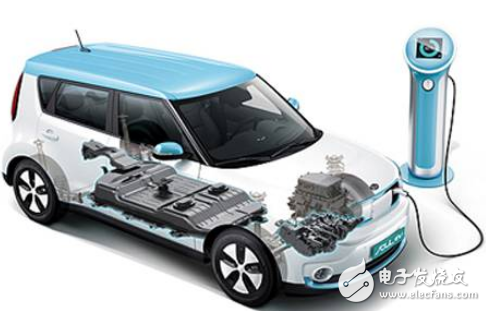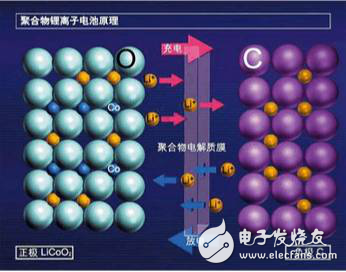Along with the introduction of a series of national incentive policies, China's new energy automobile industry is growing at a high speed, and the crazy thing is that the power core of new energy vehicles is the power battery. Power batteries are the core components of new energy vehicles.
The battery was introduced more than 200 years ago. In 1799, the Italian physicist Alessandro Volta dipped a zinc plate and a tin plate in salt water and found that a current was passed through the wires connecting the two metals. Therefore, he put a lot of fluffed cloth or paper sheets soaked in salt water between the zinc sheets and the silver sheets. When you touch both ends by hand, you will feel strong current stimulation. In this way, Alessandro Volta succeeded in making the world's first battery, the "Volt Stack." This "volt stack" is actually a battery pack in series. It became the power source for early electrical experiments and telegraph machines. In 1859, the famous French physicist and inventor Gaston Planté developed the world's first lead-acid battery. In 1970, Exxon's MSWhitTIngham used titanium sulfide as the positive electrode material and lithium metal as the negative electrode material to make the first lithium battery.

Since the first battery was introduced, the battery has continued to develop, and lithium polymer batteries, solar cells, and fuel cells have emerged. At present, the power batteries used in new energy vehicles mainly include nickel-hydrogen batteries, lithium-ion batteries and lead-acid batteries. Nickel-metal hydride batteries are facing the elimination, and lead-acid batteries are supported by the amount of possession. Currently, lithium batteries are the most mainstream. The lithium ion battery refers to a battery composed of two compounds capable of reversibly intercalating and deintercalating lithium ions as a positive and negative electrode. When the battery is charged, lithium ions are deintercalated from the positive electrode and embedded in the negative electrode, and vice versa when discharging.
The main parameters for measuring battery performance are energy density, stability, and cycle life. In terms of technology, the core technology of power batteries lies in materials. Lithium-powered batteries are mainly composed of lithium cobaltate, ternary materials, lithium manganate and lithium iron phosphate. The main performance indicators of the four types of lithium batteries are as follows:

Main parameter list of several major lithium batteries
Lithium cobaltate is the originator of lithium ion battery cathode materials. The main advantage is that the energy density is large, and the disadvantage is poor stability, that is, low safety. Tesla uses this type of battery primarily to get superior endurance. The ternary material, namely nickel-cobalt-manganese three kinds of cathode materials, is mixed in a certain proportion, and the energy density is outstanding, but the safety is general, which is the mainstream direction of the international power battery research and development. Lithium manganate is currently leading the market due to its excellent comprehensive level, and Japan and South Korea's lithium manganate battery technology is leading the world. Lithium iron phosphate has excellent stability and longevity. The domestic technology is strong, and the country has invested a lot of money. The disadvantage of restricting its heavy use is low energy density and poor consistency. Consistency is the degree of deviation between key indicators such as weight, voltage, and internal resistance between individual batteries of the same model. The greater the deviation, the worse the consistency. An electric vehicle is a battery pack that combines a large number of individual batteries in series and in parallel. The more strings, the more inconsistencies and the shorter the battery life.
For each of these four types of batteries, each lithium battery has its own model. Pure electric vehicles have high requirements for cost and endurance, so ternary lithium batteries have more potential. Plug-in hybrid vehicles often have high power discharge and high charging and discharging frequency, so lithium iron phosphate is suitable. Low-speed electric vehicles do not require high energy density. Lead-acid batteries have lower prices than lithium batteries, so there is still a certain survival value in such markets. Electric bicycles use less batteries, so the replacement of lead-acid batteries by ternary lithium batteries is an inevitable trend.
At present, most of the domestic power lithium battery manufacturers are transformed from consumer lithium battery manufacturers, while the power lithium battery safety and technical standards are much higher than consumer lithium batteries. The battery quality of domestic enterprises may be better. If used in the whole vehicle, the quality of these batteries has yet to be developed. Compared with Japanese and Korean battery giants, there are still gaps in the safety and consistency of Chinese manufacturers. One of the important reasons is that some domestic production process parameters are not as high as those of foreign companies, resulting in a large product differentiation. At present, foreign battery giants have entered the Chinese market one after another. In the next few years, the competition in the power battery industry is fierce. In order to occupy half of the power battery industry, it is necessary to continue technological innovation and at the same time steadily and steadily.
Outdoor Street Lighting,Parking Lot Street Light,LED Shoebox Area Lights,Outdoor Waterproof Parking Lot Light
Vietnam JJ Lighting Company , https://www.vnjjlighting.com